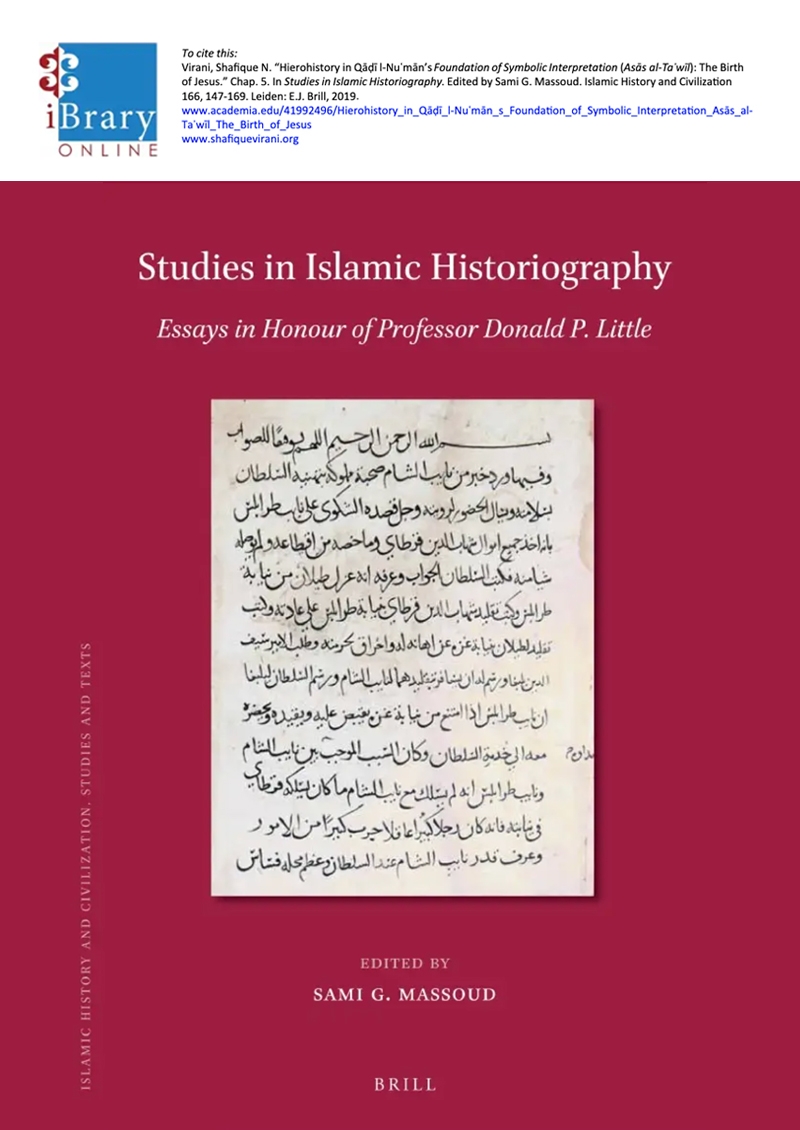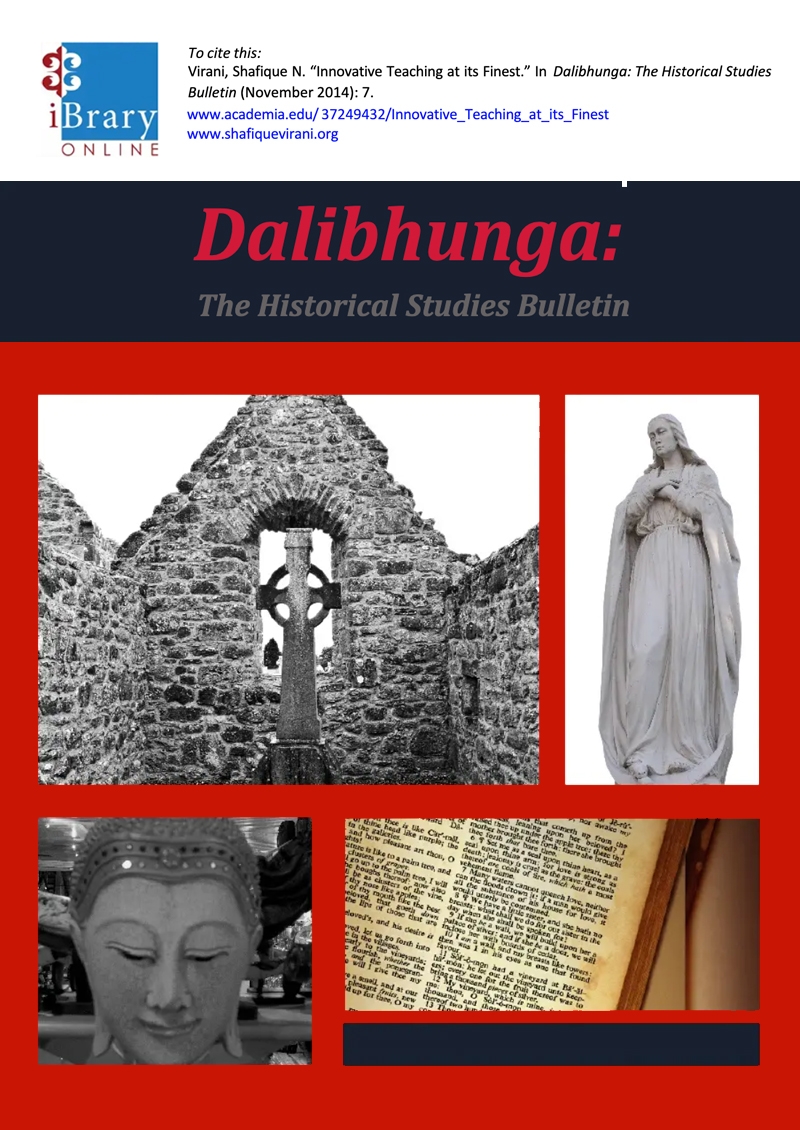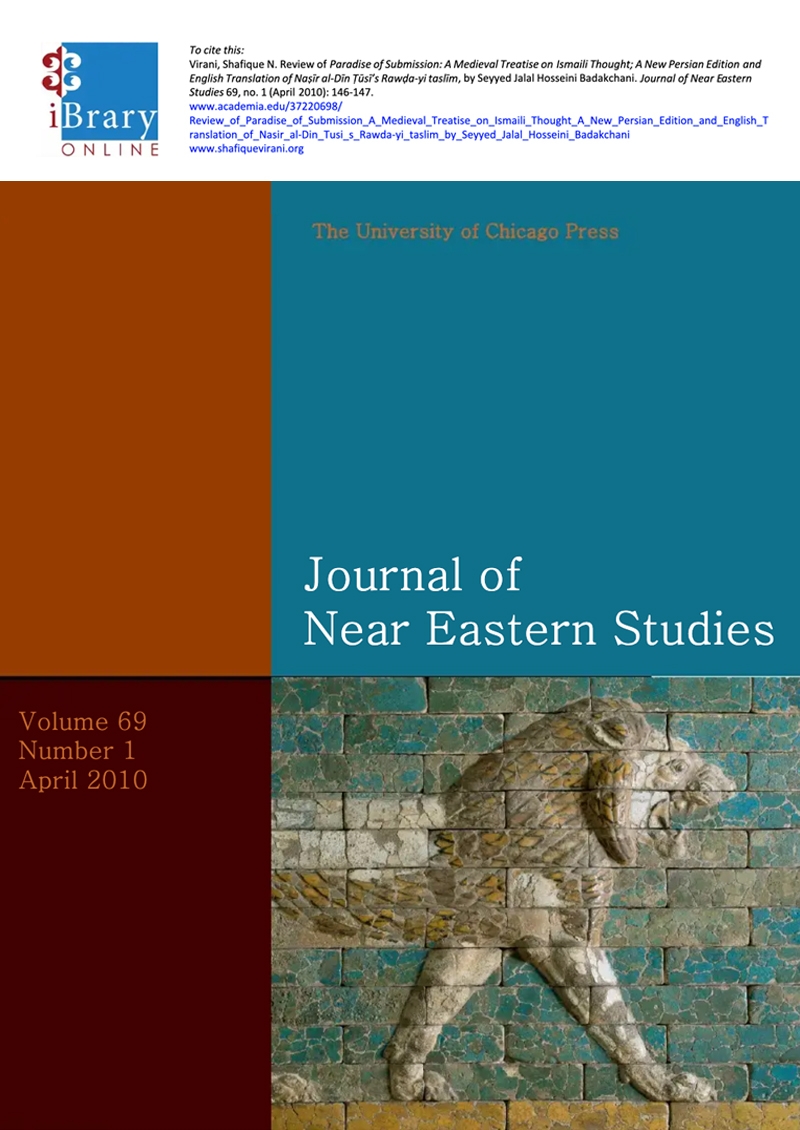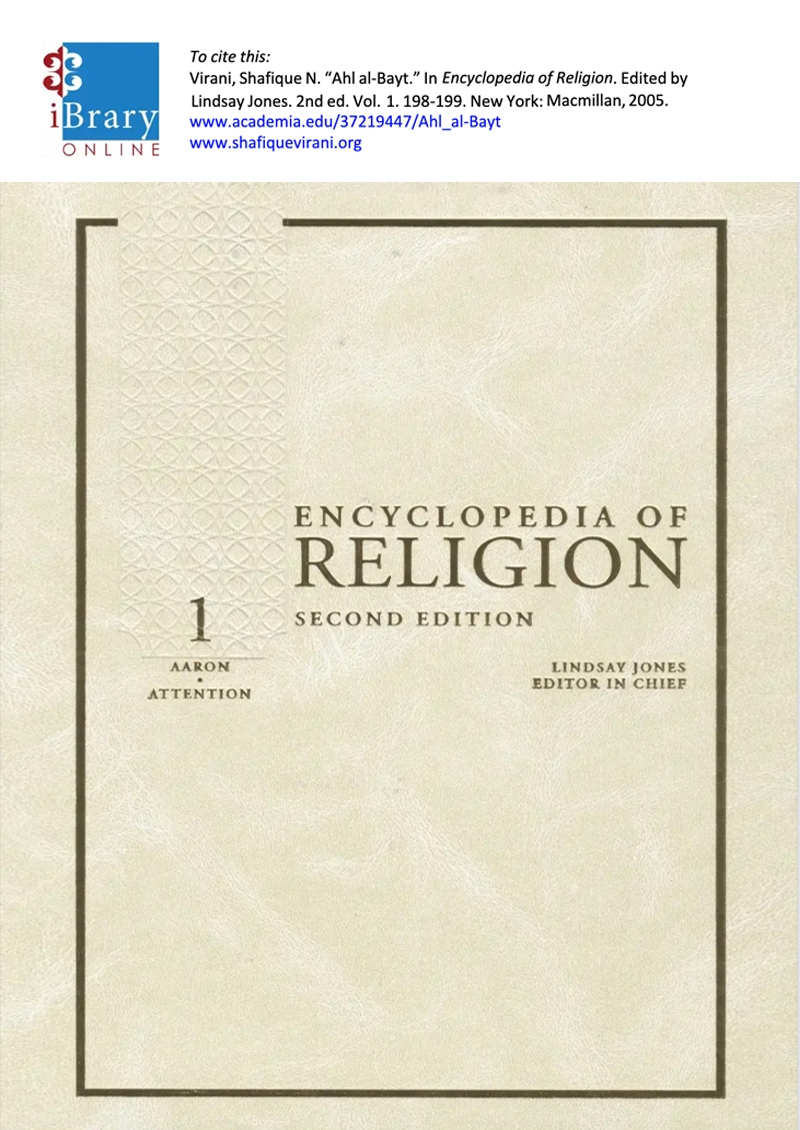Publication – English
Hierohistory in Qāḍī l-Nuʿmān’s Foundation of Symbolic Interpretation (Asās al-Taʾwīl):
The Birth of Jesus
Studies in Islamic Historiography, 2019
Abstract:
Unsullied by imperfection, the Hereafter is beyond time and place. However, for those bound by time and place, it is sometimes alluded to in terms of time, sometimes in terms of place, that such folk may grasp it in their language. Nasir al-Din Tusi, The Beginning and The End
The writings of Fatimid Ismaili intellectuals emphasize the importance of understanding the world and faith by maintaining a proper balance between their exterior, physical, literal and apparent forms (their zahir) and their esoteric, spiritual, symbolic and intellectual realities (their batin). The process of evincing the latter from the former is known as ta’wil, or symbolic interpretation. This article analyzes the concept of ta’wil, focusing on its Ismaili form; introduces the Foundation of Symbolic Interpretation (Asas al-ta’wil) of Qadi al-Nu’man, one of the preeminent authors of works of this genre; analyzes the concept of sacred biography, hierohistory and the spiritual hierarchy (hudud al-din) as elaborated in this text; and then translates a portion of the Foundation of Symbolic Interpretation about the birth of Jesus (Q 3:42-48) as an example of this esoteric approach to sacred history.
Cite this publication:
Virani, Shafique N. “Hierohistory in Qāḍī l-Nuʿmān’s Foundation of Symbolic Interpretation (Asās al-Ta’wīl): The Birthof Jesus.” Chap. 5. In Studies in Islamic Historiography. Edited by Sami G. Massoud. Islamic History and Civilization166, 147-169. Leiden: E.J. Brill, 2019.
Share what you’re reading on social media
If you liked this, you may also enjoy reading




